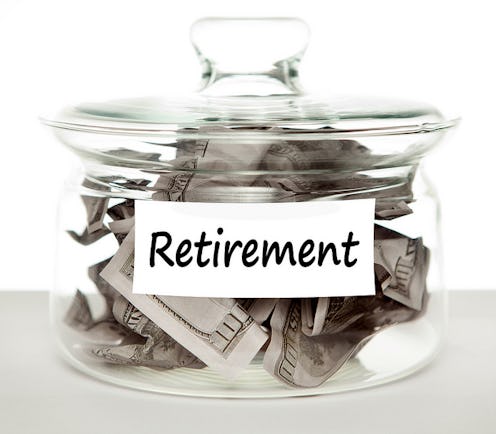
If you thought that women were finally getting closer to earning wage equality, think again — because it turns out the retirement gender gap is a thing, and it's just as insidious as the one in the working world. Here's the deal: A new report found that to have a good standard of living once retired, women have to put away $126 for every $100 men do. The result? A sexist retirement gap that once again puts women at a disadvantage purely because they're not men. Is this story getting old to anyone else?
This finding came from a report out of Financial Finesse, which looked at how saving abilities were compromised by gender. To do this, they set out to find out how much both men and women needed to save in order to retire at age 65 and live on 70 percent of their pre-retirement income. They found that a huge gap existed between men and women, as a man needed to reach $212,000 to live comfortably in retirement, while a woman needed to have $268,000 to achieve that same stability. Yikes.
This is also just part of the picture, however; these figures only reflect a standard of living that represents 70 percent of the retiree's former income while in the workforce. They don't include any retirement-related costs... but when those are factored in? Wrote Suzanne Woolley of Bloomberg Business, "The gap turns into a chasm."
In order to get their initial figures, Financial Finesse used data from the Bureau of Labor Statistics' consumer expenditure survey, which analyzes spending and expenses for people age 65 and over. Using their own data to compare with these averages, Financial Finesse estimated that, to account for the average cost of retirement expenses, the average man will need to save another $270,000 on to of his $212,000, while women will need to save another $522,000. Yes, you read that correctly; women need to save almost twice as much as men to account for additional retirement expenses. Financial Finesse Senior Financial Planner Gregory Ward explained how this savings gap adds up. "Lower Social Security benefits, longer life expectancy, and lower retirement savings balances because of lower-paying jobs all compound into this incredibly large shortfall," he told Bloomberg Business. Talk about a gender wage gap!
The study also compared the difference between men and women's financial altitudes by examining data from over 12,000 surveys that looked at factors like ability to retire, having an emergency fund, and having an asset allocation plan. They found that in the last two years alone, women's progress was shifting towards the closure of the gender gap, while men's was stagnant or in some cases, declining. Overall though, the numbers still are a bit alarming, as over half of employees — 60 percent — haven't projected their financial future into retirement or put together a savings plan to figure out what they need to save in order to get there.
It's no secret that most of us need to focus a little more on planning for our financial future — something which is difficult enough, given the fact that the cost of living is rising while wages are remaining stagnant — but for women, it's particularly burdensome. The wage gap isn't a myth, and its effects are further reaching than just what we bring home each month. The retirement gender gap is proof positive.
Images: Potter, Tax Credits/Flickr; Giphy